The toxic side of the Moon: The mystery of Moon dust
27th Apr 2023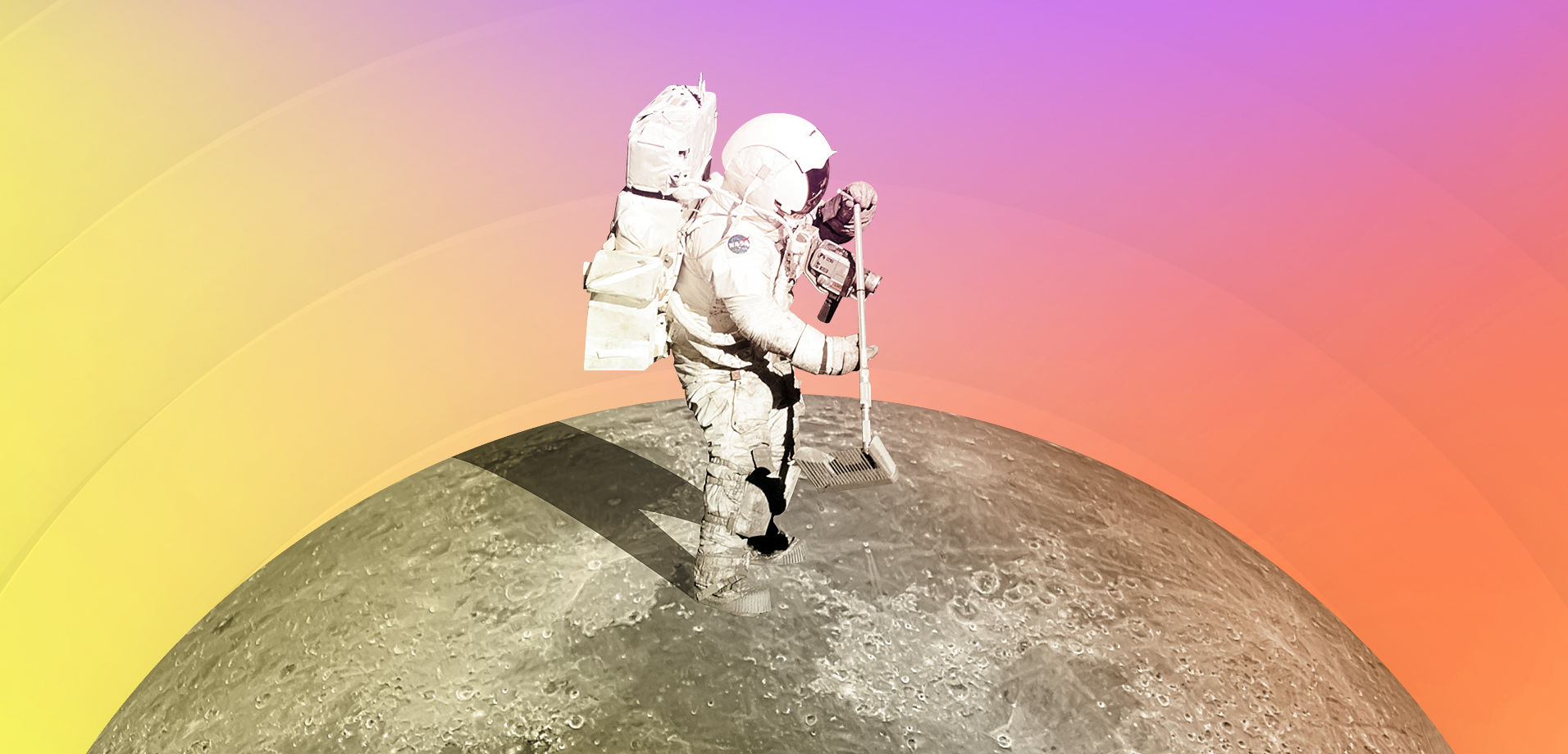
Humanity has been studying the Moon for centuries, but only at the beginning of the space exploration era did we get a real chance to see the Earth’s natural satellite with our own eyes. However, many scientists believed that even if they succeeded in flying to the Moon, it would still be impossible to land on it since the ship would simply sink in a huge layer of moon dust. The same hypothesis was also fueled by popular science fiction writers.
In 1959, Isaac Asimov, in his popular science article “14 Million Tons of Dust Per Year”, suggested that this is the amount of moon powder that falls on Earth every year. And two years later, Arthur C. Clarke released the novel “A Fall of Moondust,” in which the lunar settlers were forced to move across the surface on special dust-propelled vehicles.
According to legend, the endless debate about how deep the dust on the Moon is, was put to an end by the Soviet rocket engineer Sergei Korolev. At one meeting, he wrote in a notebook: “The moon is solid,” put the date, signed, and handed the sheet to his opponent. The first automatic lunar mission, which successfully reached the lunar surface in 1966, confirmed that the Moon is really solid, and the dust layer does not exceed a few dozen of centimetres. But when Neil Armstrong stepped on the Moon, we learned that real moon dust is far from being a harmless substance and presents a certain problem.
In light of the new Artemis lunar mission, we decided to look into what is Moon dust, why is it called the toxic side of the Moon, and how is this problem going to be solved.
What is Moondust made out of?
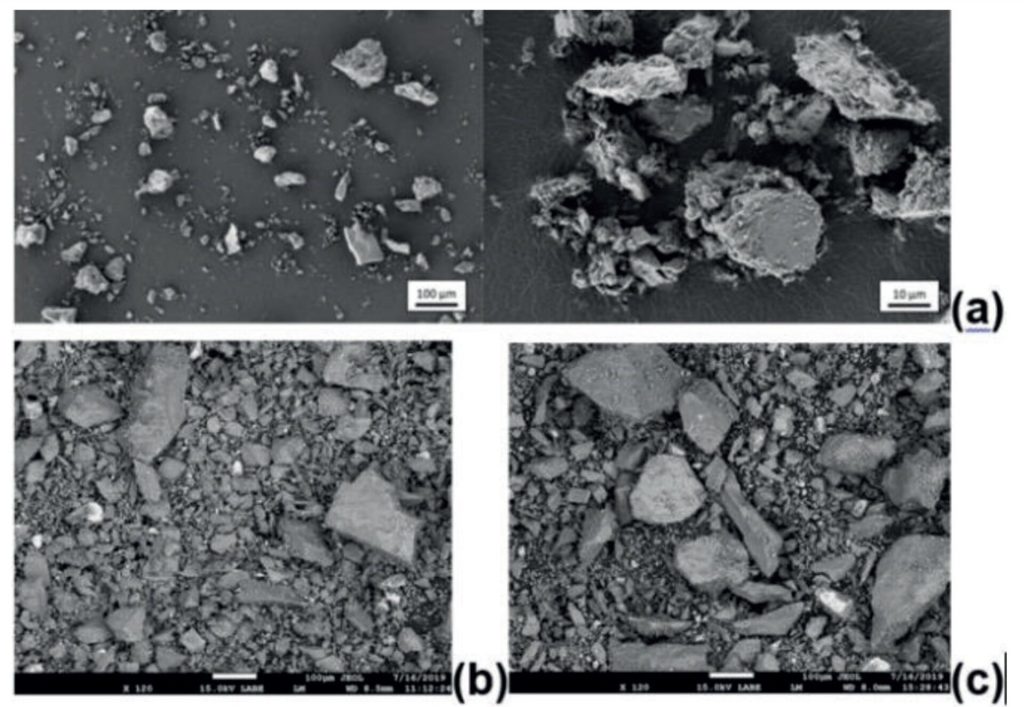
We know that the entire surface of the Moon is covered with regolith — soil consisting of fragments of igneous rocks, minerals, glass, meteorites, and breccias of shock-explosive origin, cemented by the glass. Regolith particles smaller than 100 µm are called moon dust.
How is moon dust created?
Since there is no atmosphere on the Moon to act as a shield, its surface is subject to constant bombardment by the solar wind and micrometeorites. They heat and grind the regolith into glassy grains of sand, which quickly harden, forming sharp edges of bizarre shapes. On Earth, the wind and water would smooth them out over time, but there is neither wind nor water on the Moon, so this doesn’t happen.
Buzz Aldrin and Neil Armstrong first noticed this problem when they set up a pole with an American flag on the lunar surface. They managed to stick it in only with great difficulty because glass particles interfered.
What is the phenomenon of the iridescent Moon?
Notably, the specific shape of lunar dust reflects sunlight unevenly. Because of this, the surface of the satellite is not dull grey, as it may seem in the footage taken by the Apollo missions astronauts. On the contrary, it shimmers in different colours — from brown to gold and silver. Scientists have dubbed this occurrence the phenomenon of the iridescent Moon. The spectacle is really beautiful, but it only emphasizes the insidiousness of the moon dust.
Why is lunar dust dangerous?
Most lunar dust is very fine grained — up to 2 microns. But the problem is that the human respiratory system successfully copes with particles larger than 10 microns (about 1/7 of the human hair diameter). This poses a threat of moon powder penetration into the ship and its settling in the lungs, which can lead to irreversible health consequences, even death. In addition, scientists are concerned that lunar dust can be toxic under prolonged contact.
What happens if you breathe in Moon dust?
In some ways, lunar dust resembles silica dust on Earth, which causes lung silicosis, says Russell Kerschmann, a specialist at NASA’s Ames Research Center, which studies the effects of mineral dust on human health. Formerly, lung silicosis was called “stone crusher disease.” During the Great Depression in the United States, hundreds of miners drilling the Hawk’s Nest Tunnel through Mount Gauley in West Virginia died within five years of having their lungs clogged with fine silica dust released into the air from dry drilling. The dust was so deeply ingrained in the lungs that it could not come out, either with a cough or mucus. Men were slowly choking on symptoms similar to pneumonia.
Lunar dust, like quartz, is a silicon compound, so it poses a similar threat.
The research by American scientists from Stony Brook University also confirms the danger of lunar dust. They managed to create an imitation of small lunar soil particles and expose them to human lung cells and mice brains. Experience has shown that with prolonged contact, 90% of the cells died! This indirectly proves that as the duration of an astronaut’s stay on the Moon increases, so will the risk of respiratory dysfunction, pneumonia, and even lung cancer.
So far, only one thing looks optimistic in scientists’ findings. Apollo astronauts going to the Moon should not have been afraid for their lungs — not just because they did not realize the danger but also because they spent only a few hours on the lunar surface. Yet, even during this time, they did experience some problems with the dust.
How lunar dust interfered with the Apollo astronauts
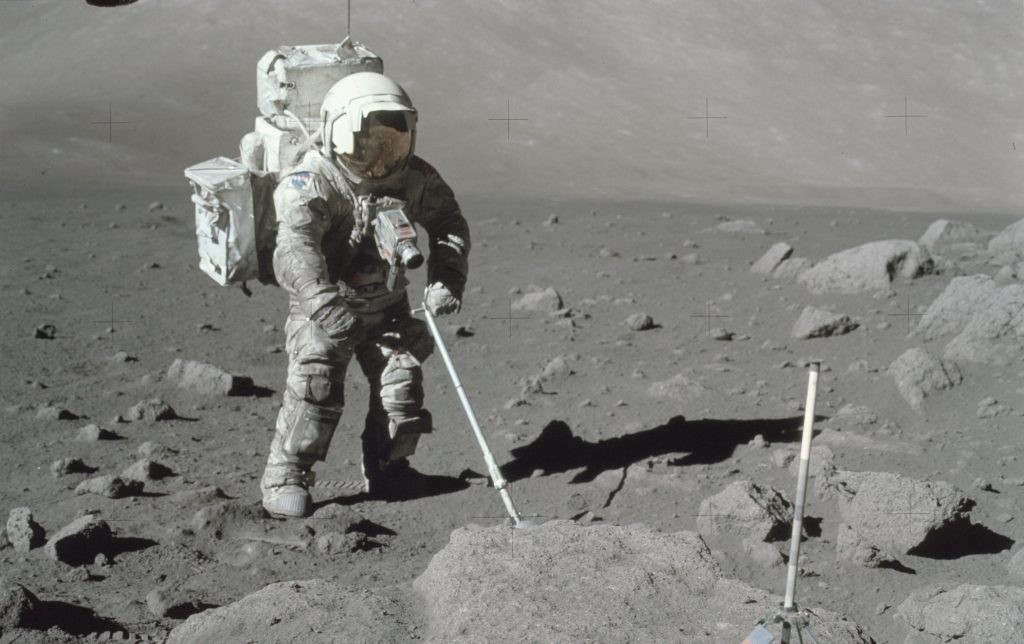
In 2006, Apollo 17 astronaut Harrison “Jack” Schmitt wrote in his book Return to the Moon that the corrosive nature of moon dust poses a greater threat to future lunar colonists than radiation. The astronaut knew exactly what he was talking about.
Hay fever
On his return flight home, Schmitt contracted symptoms similar to those of hay fever. His eyes watered, his throat was dry, and he sneezed heavily. Luckily it only lasted one day. And upon returning to Earth, the symptoms disappeared without a trace. It turned out that he inhaled the moon dust that fell on the ship. But how did it get there?
Sticky dirt
Due to the electrostatic effect, the lunar dust is magnetized and becomes sticky, just like when you rub a balloon on your hair. Because of this, it not only covers the satellite’s surface with a dense layer but also rises quite high above it (up to 60 miles) and sticks to everything — including spacesuits, tools, and equipment. That’s how the Apollo astronauts brought it inside their spacecraft.
During the six Apollo flights, low pressure could not be maintained in any seemingly completely sealed container with lunar samples — lunar dust still penetrated there. Attempting to get rid of the annoying guest, the Apollo 12 astronauts were armed with brushes, rags, and a vacuum cleaner. But none of these cleaning methods worked — the deposits stubbornly clung.
Hard repair
It turned out that dust makes it very difficult to use adhesive tape, which astronauts use for many spacecraft repairs. The Apollo 17 crew fixed the lunar rover’s rear fender with such tape, but not on the first try. Dust instantly stuck to the adhesive part of the tape, unattached it from the fender so the fastened parts would not hold.
Specific smell
All astronauts noted that moon dust smells like…burned gunpowder. As to why, there is still no explanation. Lunar dust is rich in iron, calcium and magnesium, olivine and pyroxene minerals, whereas gunpowder is a mixture of nitrocellulose and nitroglycerin. So, they have nothing in common. So where does the smell come from?
NASA geologist Gary Lofgren believes that a specific smell appears when lunar dust comes into contact with moist air in the lunar module and sort of “burns out” in an oxygen environment. Oxygen is very reactive, notes Lofgren, and easily combines with the chemical bonds of lunar dust. The oxidation process is similar to combustion. Although it is too slow for smoke or flames, the oxidization of lunar dust can produce an odour similar to burnt gunpowder.
How is Artemis going to solve the lunar dust problem?
With the shutdown of the Apollo program, the problem of lunar dust also disappeared. However, now that humanity plans to return to the Moon, the old challenges are becoming relevant again. However, this time, moon dust barely stands a chance. Over the past fifty years, humanity has invented many new materials and mechanisms that will either counteract the adhesion of dust or be resistant to its effects.
New tight spacesuit
In 2019, NASA introduced the xEMU (Exploration Extravehicular Mobility Unit), a new type of spacesuit designed specifically for the Artemis program. xEMU is an improved model of the spacesuit used by American astronauts for spacewalks from the ISS. It is based on a modular design with an upper torso and a rear access hatch. The suit is designed to operate in the range from -157°C to 121°C and provides a high degree of freedom. It will allow astronauts to jump, bend over, raise their arms, and turn their torsos. xEMU has no protruding zippers and cables, fewer seams, rivets and various protrusions, and the fabric is treated with an antistatic compound.
Improved pollution control
According to plans, tools and some equipment will be treated with chemicals that prevent dirt from sticking; instead, it will simply slide off the surface. However, it is not yet clear how long this effect will last and how it will affect ergonomics.
To deal with already-formed pollution, scientists plan to use ultrasound, an electric field, and even liquid nitrogen. In 2021, NASA announced a competition to develop an effective lunar dust remedy and is ready to pay a million dollars for it.
How can Moon dust help humans?
You may be surprised, but NASA and other agencies involved in the Artemis program plan not only to defeat lunar dust but also to benefit from it.
Lunar harvest
The University of Florida biologists have planted watercress seeds in moon dust brought in by three Apollo missions. Watercress, or Arabidopsis thaliana, is a small flowering plant resembling broccoli, cauliflower, and kale. A few days later, they were surprised to find that the seeds germinated, although they grew slowly and developed weak roots. No surprise here: the lunar soil is nutrient-poor, rich in iron particles, and littered with meteoric glass shards that are sharp and abrasive, making plant growth difficult. However, molecular analysis has shown that plants have grown genes to cope with environmental stress. Some developed reddish-black spots.
Seeds grown in moon dust raise hopes that future lunar colonists would be able to grow their own food without relying entirely on resupply from Earth.
Rocket Fuel
Chinese scientists have suggested that lunar dust could be used to make fuel for spacecraft. Mining fuel on the Moon will eliminate the need to bring enough of it from Earth for a return flight. This will decrease the spacecraft’s weight and reduce the cost of launching.
Moon dust contains iron and titanium-containing substances that can be used as a catalyst to produce useful materials. For example, scientists have demonstrated that electrodes made from these materials are capable of extracting oxygen and hydrogen from water, albeit with relatively low stability.
Research has also shown that lunar dust can be used to produce methane and methanol from carbon dioxide and hydrogen. Methane can be used as rocket fuel, and methanol is the starting point for the production of many useful chemicals.
Sun umbrella
Everyone knows that due to rising CO2 levels, our planet is gradually warming up. In early 2023, a team of astrophysicists at the University of Utah ran computer simulations that showed that a lunar dust ejection from the Moon’s surface into space could temporarily darken the Sun, thus reducing dangerously rising levels of solar radiation.
Curiously, the proposal to use moon dust as a sun shield was made 15 years ago by Curtis Struck of Iowa State University. Scientists are confident that the method will work; the only problem is its technical implementation. Such a solution is both expensive and slow. But if we really get to the point where darkening the Sun is a necessary step to save our planet, the lunar dust option will have to be explored.
Conclusion
Even though NASA knew about the existence of moon dust, it came as an unpleasant surprise for the Apollo astronauts. Aggressive substance stuck to all surfaces, penetrated vehicles and containers and created breathing problems. Today, when humanity plans not only to return to the Moon but also to stay there for a long time, the problem of moon dirt must be solved. And it looks like NASA is ready for this. We’ll find out as soon as possible and let you know — so follow our updates.
![Beauty of the Pink Moon And Lyrid Meteor Shower in This Week’s Best Astrophotos [19-26 April] Beauty of the Pink Moon And Lyrid Meteor Shower in This Week’s Best Astrophotos [19-26 April]](https://orbitaltoday.com/wp-content/uploads/2024/04/Pink-Moon-is-on-its-way-above-the-mountains-1-300x300.jpg)
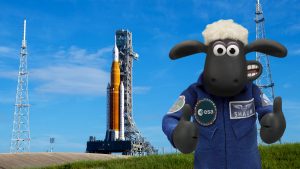
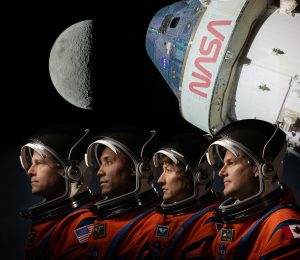



Thank you for your comment! It will be visible on the site after moderation.